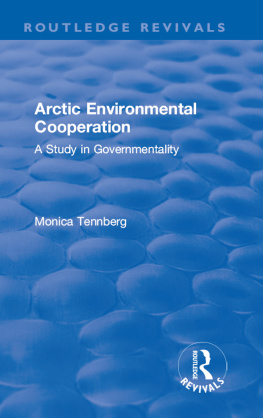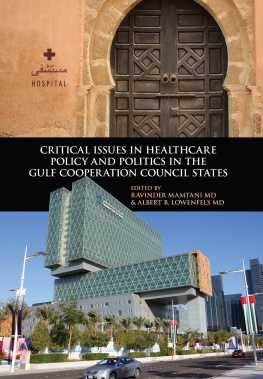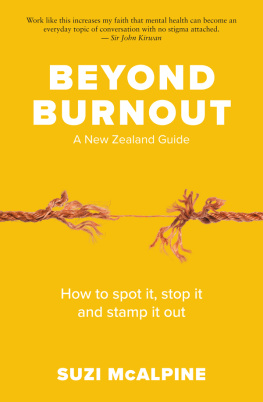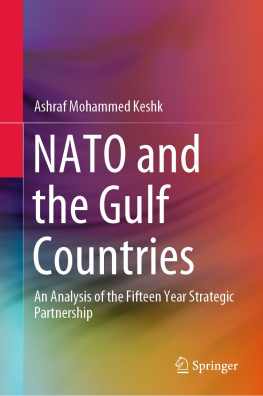Art and Cultural Production in the Gulf Cooperation Council
State-driven investments in art and cultural production in the states of the Gulf Cooperation Council (GCC) are an important part of the search for alternatives to the longer-term unsustainability of the hydrocarbon-based economic development model. They are also an element in the search for soft power and status, and intersect with the nation-building project. The long-term plannedand unplannedeffects of such cultural initiatives include a necessary opening up to a future of unexpected and often undesired cultural encounters, whether in the classroom, the art gallery, the sports stadium, or the labor office. As states driven by a desire to raise both their regional and international status, but needing to satisfy their domestic conservative constituencies, their greatest test will be their judicious negotiation of the conflicting sociocultural elements of an increasingly globalized world. This volume offers a comprehensive multidisciplinary analysis of this complex arena and the state of art and cultural production in these Gulf societies, through original studies on identity formation and an emerging museology; the aesthetics of censorship; the question of authenticity; cultural projects as state-driven soft power efforts; the phenomenon of public art; and artistic engagements with migrant labor communities.
The chapters in this book were originally published as a special issue in the Journal of Arabian Studies.
Suzi Mirgani is Managing Editor at the Center for International and Regional Studies (CIRS), Georgetown University in Qatar. She is author of Target Markets: International Terrorism Meets Global Capitalism in the Mall (2017); and coeditor of Bullets and Bulletins: Media and Politics in the Wake of the Arab Uprisings (with Mohamed Zayani, 2016) and Food Security in the Middle East (with Zahra Babar, 2014). Mirgani is an independent filmmaker highlighting stories from Qatar.
Art and Cultural Production in the
Gulf Cooperation Council
Edited by
Suzi Mirgani
First published 2018
by Routledge
2 Park Square, Milton Park, Abingdon, Oxon, OX14 4RN, UK
and by Routledge
711 Third Avenue, New York, NY 10017, USA
Routledge is an imprint of the Taylor & Francis Group, an informa business
2018 Taylor & Francis
All rights reserved. No part of this book may be reprinted or reproduced or utilised in any form or by any electronic, mechanical, or other means, now known or hereafter invented, including photocopying and recording, or in any information storage or retrieval system, without permission in writing from the publishers.
Trademark notice: Product or corporate names may be trademarks or registered trademarks, and are used only for identification and explanation without intent to infringe.
British Library Cataloguing in Publication Data
A catalogue record for this book is available from the British Library
ISBN13: 978-0-8153-5079-8
Typeset in TimesNewRomanPS
by diacriTech, Chennai
Publishers Note
The publisher accepts responsibility for any inconsistencies that may have arisen during the conversion of this book from journal articles to book chapters, namely the possible inclusion of journal terminology.
Disclaimer
Every effort has been made to contact copyright holders for their permission to reprint material in this book. The publishers would be grateful to hear from any copyright holder who is not here acknowledged and will undertake to rectify any errors or omissions in future editions of this book.
Contents
Suzi Mirgani
Elizabeth Derderian
Nancy Demerdash
Karen Exell
Lesley Gray
Nadia Mounajjed
Sarina Wakefield
The chapters in this book were originally published in the Journal of Arabian Studies, volume 7, supplement 1 (August 2017).
Suzi Mirgani
Journal of Arabian Studies, volume 7, supplement 1 (August 2017) pp. 111
Elizabeth Derderian
Journal of Arabian Studies, volume 7, supplement 1 (August 2017) pp. 1227
Nancy Demerdash
Journal of Arabian Studies, volume 7, supplement 1 (August 2017) pp. 2848
Karen Exell
Journal of Arabian Studies, volume 7, supplement 1 (August 2017) pp. 4964
Lesley Gray
Journal of Arabian Studies, volume 7, supplement 1 (August 2017) pp. 6583
Nadia Mounajjed
Journal of Arabian Studies, volume 7, supplement 1 (August 2017) pp. 8498
Sarina Wakefield
Journal of Arabian Studies, volume 7, supplement 1 (August 2017) pp. 99111
For any permission-related enquiries please visit:
http://www.tandfonline.com/page/help/permissions
Nancy Demerdash is a Visiting Assistant Professor of Art History in the Department of Visual Arts at Wells College, USA.
Elizabeth Derderian is a PhD candidate in the Department of Anthropology, Northwestern University, USA.
Karen Exell is Honorary Senior Research Associate at UCL Qatar, and a consultant at Qatar Museums.
Lesley Gray is a doctoral candidate in Museum Studies at UCL Qatar.
Suzi Mirgani is Managing Editor at the Center for International and Regional Studies (CIRS), Georgetown University in Qatar.
Nadia Mounajjed is Assistant Professor of Architecture and Design at Abu Dhabi University, UAE.
Sarina Wakefield is an Adjunct Lecturer at the College of Arts and Creative Enterprises, Zayed University, UAE.
Introduction:
Art and Cultural Production in the GCC
SUZI MIRGANI
Abstract: The long-term unsustainability of a hydrocarbon-based economic future has become a major concern for the states of the Gulf Cooperation Council (GCC), and is one of the main driving forces underpinning the search for alternative modes of economic development. Towards this end, some of the GCC states have been making record, headline-grabbing investments in the fields of finance, healthcare, education, sports, and, as concerns this paper, art and culture. The long-term planned and unplanned effects of state-sponsored art and culture initiatives are yet to be seen, but are moving these nations onto a more public and international stage. A side effect of the GCC states cultural investments is a necessary opening up to a future of unexpected and often undesirable cultural encounters, whether in the classroom, the art gallery, the sports stadium, or the labor office. As nations driven by a desire to be among the regions leading powers but needing to satisfy their internal conservative components, their greatest test will be their judicious negotiating of the incompatible elements of an increasingly globalized world.
1Background
Over the past few decades, the GCC states have been strategically working towards diversifying their economies by translating abundant natural resource capital into other areas of investment and institutional infrastructure.1 The governments of these countries have crafted their nation-building masterplans according to the cadence of oil and gas prices and the rise and fall of wealth accrued from their hydrocarbons industries. The long-term unsustainability of a hydrocarbon-based economic future has become a major concern for the GCC states, and is one of the main driving forces underpinning the search for alternative modes of economic development ones that attempt to create, then tap into, what is termed human capital in the creeping market-centric parlance.2 Towards this end, the GCC states have been making record, headline-grabbing investments in the fields of finance, healthcare, education, sports, and, as is the concern of this special issue, art and culture.3 This collection of articles attempts to look beyond the headlines, and to examine critically a number of institutional and social engagements with these state-driven efforts.












